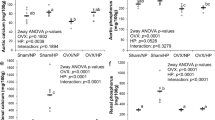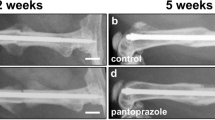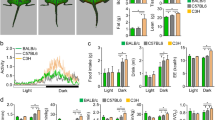Abstract
The hypothesis that there is prostaglandin-mediated hypercalcaemia associated with the Walker carcinosarcoma in the rat was tested by measuring PGE production during the development of the hypercalcaemia, and determining the effects of inhibition of prostaglandin synthesis on serum calcium concentration. Parathyroid hormone (PTH) activity was estimated by the determination of the serum concentration of immunoreactive PTH. There was a 3-fold increase in the urinary excretion of 7α-hydroxy-5,11-diketotetranor-prostane-1,16-dioic acid (PGE-M), a major urinary metabolite of the E prostaglandins from basal levels. Treatment with indomethacin, a potent inhibitor of prostaglandin synthesis, did not lower serum calcium concentrations with two different doses (1·6 mg/kg/day orally and 5 mg/kg/day i.m.); effective inhibition of prostaglandin synthesis was demonstrated by the suppression of PGE-M excretion rates below basal levels. Serum concentrations of immunoreactive PTH were not significantly altered by either tumour growth or indomethacin. Dexamethasone (0·5 mg/kg/day i.m.) attenuated both the increased urinary excretion of PGE-M and the rise in serum calcium concentration, suggesting that one or several lipoxygenase products might be the actual mediators of the hypercalcaemia. We conclude that the hypercalcaemia in the rat with Walker carcinosarcoma is probably not mediated by E-prostaglandins and probably not by any other product of the cyclo-oxygenase pathway. The increased PGE turnover may be considered as a biochemical marker of tumour load, but not as an indicator of a prostaglandin-mediated hypercalcaemia.
This is a preview of subscription content, access via your institution
Access options
Subscribe to this journal
Receive 24 print issues and online access
$259.00 per year
only $10.79 per issue
Buy this article
- Purchase on Springer Link
- Instant access to full article PDF
Prices may be subject to local taxes which are calculated during checkout
Similar content being viewed by others
Rights and permissions
About this article
Cite this article
Seyberth, H., Bonsch, G., Müller, H. et al. Prostaglandin E production and hypercalcaemia in rats bearing the Walker carcinosarcoma. Br J Cancer 42, 455–461 (1980). https://doi.org/10.1038/bjc.1980.258
Issue Date:
DOI: https://doi.org/10.1038/bjc.1980.258
This article is cited by
-
Prostanoids in paediatric kidney diseases
Pediatric Nephrology (1991)
-
The Walker 256/B carcinosarcoma in thyroparathyroidectomized rats: A model to evaluate inhibitors of bone resorption
Calcified Tissue International (1987)



